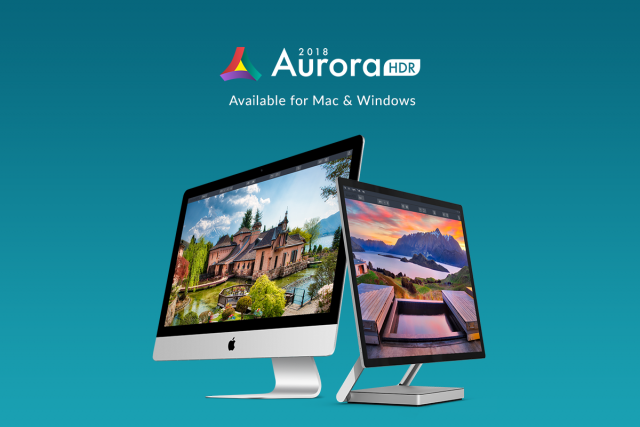The Canon EOS R10 is presented as the first camera model to feature APS-C imaging sensors behind an RF mount. It is in the entry-level position in the Canon EOS R mirrorless interchangeable lens camera series.
While the R10 is distinguished by its small size, lightweight, and low price, it has advanced capabilities and operates much like its high-end siblings.
Canon EOS R10 Mirrorless Camera

General
The EOS R10 has an RF mount, it supports optical designs that are smaller than possible with the EF mount and often include large-diameter rear-positioned elements that can feature reduced angle of light rays in the image circle periphery. Bending light to a lesser degree can lead to improved image quality, including better-corrected aberrations.
The RF mount has 12 connection pins, more than the eight pins on EF lenses, which improved camera-lens communication and increases performance.
While the EOS R10 uses RF lenses, it also can use EF/EF-S/TS-E/MP-E Lenses with Adapter.
You may check my post “Canon RF Vs EF Lenses – Detailed Comparison!” for more information.
Build Quality
The Canon EOS R10 takes on a compact form factor while still clearly meant to be comfortable in the hand. With the battery and memory card in the camera, the EOS R10 weighs about 15 ounces (429 grams). It’s very light in the hands.
| Dimensions (W x H x D) | 4.8 x 3.5 x 3.3" / 122.5 x 87.8 x 83.4 mm |
| Weight | 13.5 oz / 382.2 g (Body Only) |
| 15.1 oz / 429.2 g (With Battery, Recording Media) |
The layout features a nice slanted shutter button typical of Canon cameras, a front, and rear dial for controlling a couple of different methods of exposure, multi-controller joystick control for moving focus points quickly, and a user-programmable four-way D-pad. There’s a dedicated AF/MF switch on the front with another programmable button.

The rear controls are just as strong. The Menu button sits alone to the left of the EVF, while the focus joystick and AF-ON button are just to the right. The exposure lock and the focus area select button are further off to the right side, adjacent to the rear thumb rest. A four-way control pad, Info, and Play buttons reside below.

Touch LCD and OLED Viewfinder
Buttons and dials aren’t the only control surfaces. The rear screen is fully articulated supports touch input and offers up some intuitive features. You can tap on the screen to set the point of focus or take a picture. An on-screen Q (for quick) menu offers one-touch access to useful settings like focus and metering modes; file formats and video resolution; creative styles; and other sundries.
The screen design is variable-angle and can swing out to the side to face forward for selfies and vlog-style videos. The LCD is a healthy 3-inches across; sharp at 1.04 million dots; and offers excellent brightness, color, and viewing angles.

The viewfinder is an OLED display type. An OLED (Organic light-emitting diode) enables emissive displays, which means that each pixel is controlled individually and emits its light (unlike LCDs in which the light comes from a backlighting unit).
OLED displays are brighter, more efficient, thinner, and feature better refresh rates and contrast than other display technologies.
| Monitor | ||||||||
|---|---|---|---|---|---|---|---|---|
| Size | 3.0" | |||||||
| Resolution | 1,040,000 Dot | |||||||
| Display Type | Free-Angle Tilting Touchscreen LCD | |||||||
| Viewfinder | ||||||||
| Type | Built-In Electronic (OLED) | |||||||
| Resolution | 2,360,000 Dot | |||||||
| Eye Point | 22 mm | |||||||
| Coverage | 1 | |||||||
| Magnification | Approx. 0.95x | |||||||
| Diopter Adjustment | -3 to +1 |
Sensor and Image Quality
The Canon EOS R10 uses a newly developed 24.2-megapixel APS-C sensor and the DIGIC X image processor. There is no in-body image stabilization in this model, so extra stabilization would need to come from the lens used (Canon will put “IS” in the lens name for easy reference).
The R10 has mechanical and Electronic Shutter shutters with a speed range of 1/4000 to 30 Seconds. The burst mode allows you to shoot at 15 fps with the mechanical shutter while reaching 32 fps with the electronic shutter.
The 24 MP resolution matches the EOS R3 (a camera deployed primarily by professionals and serious amateurs), this resolution is more than adequate.
The R10’s ISO range is 100-32000 in 1/3 stop increments with the extended H(51200) setting providing a wide range of noise reduction, and sharpness enhancement enabling you to dial the results into perfection.
| Exposure Control | ||||||||
|---|---|---|---|---|---|---|---|---|
| Shutter Type | Electronic Shutter, Mechanical Focal Plane Shutter | |||||||
| Shutter Speed | Mechanical Shutter | |||||||
| 1/4000 to 30 Seconds | ||||||||
| Electronic Shutter | ||||||||
| 1/4000 to 30 Seconds | ||||||||
| Bulb/Time Mode | Bulb Mode | |||||||
| ISO Sensitivity | 100 to 32,000 in Manual, Auto Mode (Extended: 100 to 51,200) | |||||||
| Metering Method | Center-Weighted Average, Evaluative, Partial, Spot | |||||||
| Exposure Modes | Aperture Priority, Manual, Program, Shutter Priority | |||||||
| Exposure Compensation | -3 to +3 EV (1/3, 1/2 EV Steps) | |||||||
| Metering Range | -2 to 20 EV | |||||||
| White Balance | Presets: Auto, Cloudy, Color Temperature, Custom, Daylight, Flash, Fluorescent (White), Shade, Tungsten | |||||||
| Continuous Shooting | Electronic Shutter | |||||||
| Up to 23 fps at 24.2 MP for up to 70 Frames (JPEG) / 21 Frames (Raw) | ||||||||
| Mechanical Shutter | ||||||||
| Up to 15 fps at 24.2 MP for up to 460 Frames (JPEG) / 29 Frames (Raw) | ||||||||
| Interval Recording | Yes | |||||||
| Self-Timer | 2/10-Second Delay |
Still Image Photography
The EOS R10 output still photos with three different aspect ratios and four different file formats.
| Still Image Capture | |
|---|---|
| Aspect Ratio | 1:1, 3:2, 4:3, 16:9 |
| Image File Format | C-RAW, HEIF, JPEG, Raw |
- The C-RAW (compressed RAW) format has been developed using compression technology. This format compresses RAW files to 50% of the original size while maintaining the delicate detailed information and rich tone information of RAW images.
- The HEIF format produces images with smaller file sizes and higher image quality than the older JPEG standard. In other words, HEIF is just better than JPEG.

Autofocus
The autofocus system of the EOS R10 uses Canon’s Dual Pixel CMOS II AF with 651 phase-detection points. Canon claims that it has the same features as the professional EOS R3.
The EOS R10 includes one of the smartest focus systems in its class. It excels SLRs in area of coverage, the EOS R10 can focus right up to the edge of the sensor, whereas an EOS Rebel SLR limits focus points to a smaller central area of the frame.

Image by alvaroas8a0 from Pixabay
The autofocus system features intelligent subject recognition, It picks a subject by itself. The Whole Area focus setting allows the camera to look across the entire sensor to find a subject. The camera locks onto the faces and eyes of human subjects quickly. It also had no trouble spotting birds in branches and locking its eyes in the animal detection mode.
You can have more control over what is in focus; by selecting a narrower area: 1-Point, Spot focus, and Expanded AF Area Around. Setting the autofocus system to AI Servo continuous focus drive, lets the camera tracks subjects as they move through the frame.
| Focus | |
|---|---|
| Focus Type | Auto and Manual Focus |
| Focus Mode | Continuous-Servo AF, Manual Focus, Single-Servo AF |
| Autofocus Points | Photo, Video Phase Detection: 651 |
| Autofocus Sensitivity | -4 to +20 EV |
Video photography
The EOS R10 manages full-width 4K24 and 4K30 recording, plus supports 4K60 capture with a cropped-in (1.56x) view. Those are strong video specs for the class.
With the EOS R10, you can use any of the built-in picture profiles for 8-bit 4:2:0 SDR or 10-bit 4:2:2 HDR footage, but that’s it. The big downside is the absence of a flat C-Log profile (Canon Log is designed to deliver an 800 percent increase in dynamic range, minimizing the loss of detail in the darkest and brightest parts of the image).
| Internal Video Capture | ||||||||
|---|---|---|---|---|---|---|---|---|
| Recording Modes | 1- H.264/MP4 4:2:0 8-Bit | |||||||
| 2- H.265/MP4 4:2:2 10-Bit | ||||||||
| UHD 4K (3840 x 2160) | ||||||||
| Full HD (1920 x 1080) | ||||||||
| Gamma Curve | HDR-PQ | |||||||
| Broadcast Output | NTSC/PAL | |||||||
| Built-In Microphone | Stereo | |||||||
| Audio Recording | MP4: 2-Channel AAC Audio | |||||||
| External Video Capture | ||||||||
| IP Streaming | Yes |
Power and Connectivity

A rechargeable Canon LP-E17 battery powers the EOS R10. Battery life is on the slim side, with a CIPA rating of 340 LCD/210 EVF photos per charge. You can charge the R10 on the go via USB-C with a power bank.
In terms of ports and connectivity, the R10 features a single UHS-I SD card slot located next to the battery compartment, and then on the left side, there is a micro HDMI port, a USB-C port with charging capabilities, a 3.5mm microphone jack input and a remote port. Unlike the larger EOS R7, the R10 does not have a headphone jack.
Bluetooth and Wi-Fi are on board as well. The R10 works with the Canon Camera Connect app to connect to Android and iOS devices, and it can interface with PCs via the EOS Utility.
The R10 also supports direct printing to Canon printers and uploads to the image. canon cloud service, and pairs with wireless Bluetooth remotes.
| Interface | ||||||||
|---|---|---|---|---|---|---|---|---|
| Media/Memory Card Slot | Single Slot: SD/SDHC/SDXC (UHS-II) | |||||||
| Video I/O | 1 x Micro-HDMI Output | |||||||
| Audio I/O | 1 x 1/8" / 3.5 mm TRS Stereo Microphone Output | |||||||
| Other I/O | 1 x USB Type-C (USB 2.0) Input/Output | |||||||
| Wireless | Wi-Fi | |||||||
| Bluetooth | ||||||||
| Global Positioning (GPS, GLONASS, etc.) | None |
Built-in flash
The body even has a built-in flash, a helpful feature for photographers who haven’t invested in a bright prime or external Speedlite.
| Flash | ||||||||
|---|---|---|---|---|---|---|---|---|
| Built-In Flash | Yes | |||||||
| Guide Number | 19.7' / 6 m at ISO 100 | |||||||
| Maximum Sync Speed | 1/250 Second | |||||||
| Flash Compensation | -3 to +3 EV (1/3, 1/2 EV Steps) | |||||||
| Dedicated Flash System | eTTL | |||||||
| External Flash Connection | Hot Shoe |
Pros & Cons
| PROS | CONS |
|---|---|
| Budget-friendly | No IBIS |
| Good ergonomics | low battery life |
| Can use EF/EF-S/TS-E/MP-E Lenses with Adapter | 8-bit SDR video doesn't have flat profile |
| Articulating display | |
| 15fps mechanical and 23fps electronic shutter | |
| Superb subject recognition and autofocus | |
| 4K60 video in SDR or HDR | |
| Built-in flash |
Related posts
Canon R7 Vs R10- New Lineup RF Mount APS-C Cameras
Thanks for reading, I hope you enjoyed the article, in case you have any questions just drop them below & I will be happy to answer you.
If you enjoy the site, don’t forget to subscribe, we will only inform you when a new article is posted.










hello Ehab,
Photography – passion and art.
Canon – is a big name in the field. They build amazing machines.
The site is great. If I understood correctly, it is a father-son collaboration. It is very well made, extensive, and has many thematic informative and educational articles. The courses are special, they can be understood by everyone. The articles in the FAQ section are also very educational. I also like the quiz section.
The chosen theme has many followers, it is a fairly widespread field. A successful photo has behind it a complex activity, unseen and unknown by those who only look at that photo. It is not that simple to explain. Anyone can buy a photo app, but not everyone becomes a real photographer. Photographic art is art, you must have a native skill.
I like your website, I hope you have a lot of success.
All the best
Daniel
Hi Daniel
I really appreciate your comment, I am very glad you like the site.
Wishing you all the best
Canon EOS R10 is a small and mighty and ergonomically fit camera shooting high-quality pictures.
I am not very familiar with all the terminology of camera technicals. However, I carry an older cannon which still gives us great photos.
The model on review is a newer version that has more options like touch input and onscreen input.
I am not sure if I would be able to upgrade or have to buy a new one.
Mine needs extra care carrying it in rain. That is a little discomfort.
Thanks for the comment, I believe that amazing photos come from the person who is just holding any camera, the skills, and vision of the photographers only matter.
Thank you very much for this valuable and detailed post about Best Canon Camera For Beginner. I have heard that Canon is a good camera brand. I was also going to buy a photo camera. But still could not choose one. I think Canon EOS R10 Mirrorless Camera is a good camera. It has autofocus so it is very easy for me. Keep posting like this.
Thanks for the comment